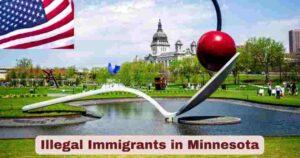Apartment Rent in America 2025
The landscape of apartment rent in the United States in 2025 tells a story of market correction after years of unprecedented growth. Following historic rent increases during the pandemic era, the rental market has entered a phase of stabilization marked by declining monthly growth rates and increasing vacancy levels. The national average rent now stands at $1,708 per month as of October 2025, representing a monthly decrease that marks the steepest October decline in over 15 years. This shift reflects fundamental changes in supply dynamics as developers complete projects that were financed years ago, flooding certain markets with new inventory while demand begins to moderate.
The current rental environment showcases stark regional differences, with Sun Belt markets that experienced explosive growth now facing significant rent declines while coastal cities demonstrate more resilient pricing. The rental vacancy rate has climbed to 7.0 percent nationally in the second quarter of 2025, signaling a loosening market that provides renters with more options but challenges property owners with increased competition. These statistics paint a picture of a market in transition, where elevated construction completions continue to impact pricing even as new starts have declined dramatically, setting the stage for tighter conditions by 2026 as the pipeline of new units begins to thin out.
Interesting Facts About Apartment Rent in the US 2025
| Fact | Detail |
|---|---|
| Steepest October Decline | October 2025 marks the largest October rent decrease in more than 15 years, with three of the five steepest monthly declines occurring in August, September, and October 2025 |
| Consecutive Monthly Declines | The nation has experienced 4 consecutive months of flat or negative monthly rent growth as of October 2025 |
| Record Vacancy Rate | The national apartment vacancy rate hit a record high of 7.0 percent in 2025, the highest level recorded in recent history |
| Construction Completions | Over 500,000 new apartment units are expected to be completed in 2025, continuing the wave of elevated supply |
| Income Gap | Renters need to earn $63,680 annually to afford the median apartment rent of $1,592, but the median renter income is only $54,752—a gap of nearly $9,000 |
| Market Divergence | Austin leads affordability with renters earning $14,000 more than needed, while Providence requires 50 percent more income than typical renters earn |
| Construction Pipeline Collapse | Apartment construction starts fell to 316,000 units in May 2025, down 30.4 percent month-over-month, signaling a dramatic pullback |
| Regional Performance Spread | The Midwest shows the strongest annual rent growth at 2.2 percent, while the West experiences negative growth at -1.4 percent |
Data sources: CoStar/Apartments.com, Apartment List, U.S. Census Bureau, Redfin, National Association of Home Builders
These striking facts reveal a rental market undergoing historic transformation. The concentration of steepest monthly declines within a three-month period represents an unprecedented pattern that deviates from typical seasonal rent fluctuations. Historically, autumn months show moderating rent growth, but the magnitude of these 2025 declines surpasses any comparable period in the past decade and a half. This acceleration stems directly from the collision of two powerful forces: an unprecedented wave of new apartment completions entering the market simultaneously, and a moderation in renter demand as affordability concerns mount and economic uncertainty creates household formation delays.
The record vacancy rate of 7.0 percent serves as perhaps the clearest indicator of oversupply conditions. When compared to the pre-pandemic vacancy rate that hovered around 4.5 to 5.0 percent, this elevation represents a fundamental shift in market dynamics. Property owners and operators now face the challenge of filling units in an environment where renters hold unprecedented negotiating power. The income gap between what renters earn and what they need to afford housing has narrowed compared to peak pandemic levels, yet it remains substantial at approximately $9,000 annually. This affordability challenge persists despite rent growth cooling, as wage increases have not kept pace with the cumulative rent increases experienced since 2020. The construction pipeline collapse, with starts falling below pre-pandemic levels, signals that developers have responded decisively to current oversupply conditions, which will ultimately lead to tighter markets in 2026 and beyond as today’s reduced starts translate into fewer completions in future years.
National Apartment Rent Statistics in the US 2025
| Metric | October 2025 Value | Change from September | Annual Change |
|---|---|---|---|
| Average National Rent | $1,708 | -0.3% | +0.8% |
| Revised September Rent | $1,713 | – | – |
| Annual Growth (Start of 2025) | – | – | 1.5% |
| Consecutive Months of Flat/Negative Growth | 4 months | – | – |
| Median Asking Rent (Various Sources) | $1,392 to $2,075 | -0.3% to +0.6% | Variable by source |
| Income Required to Afford Rent | $63,680 | -0.4% | -6.4% from peak |
| Median Renter Income | $54,752 | – | +5.3% |
| National Vacancy Rate | 7.0% to 8.1% | – | Record high |
| Rent-to-Income Ratio | 22.5% to 29.5% | – | Near pre-pandemic levels |
Data sources: CoStar/Apartments.com October 2025 Report, Apartment List National Rent Report, Zillow Rental Market Report, Redfin Rental Affordability Analysis, U.S. Census Bureau Housing Vacancy Survey
The national statistics for apartment rent in the United States in 2025 reveal a market experiencing significant deceleration after years of rapid growth. The average national rent of $1,708 in October represents a modest 0.3 percent monthly decline, but this seemingly small number carries substantial weight when placed in historical context. The fact that this marks the steepest October decline in more than 15 years demonstrates how unusual current market conditions have become. The annual growth rate of just 0.8 percent stands in sharp contrast to the 1.5 percent growth observed at the beginning of 2025, and represents a dramatic slowdown from the double-digit growth rates that characterized the 2021-2022 period. Four consecutive months of flat or negative growth signals a clear trend rather than temporary fluctuation, indicating that the market has entered a sustained period of price stabilization.
The disconnect between median renter income and the income required to afford housing remains one of the most pressing challenges facing American renters in 2025. While the required income to afford the median apartment has declined 6.4 percent from its August 2022 peak, the typical renter still falls approximately $9,000 short of what they need to comfortably afford housing using the standard 30 percent of income threshold. However, there is encouraging news: median renter income has grown 5.3 percent year-over-year, outpacing rent growth for the first time since the pandemic began. The rent-to-income ratio has improved to approximately 22.5 percent for market-rate apartments, though broader measures including subsidized housing show ratios approaching 29.5 percent. The record vacancy rate of 7.0 percent, more than two full percentage points above pre-pandemic norms, reflects the massive influx of new supply hitting the market throughout 2024 and 2025. Over 500,000 new apartment units are expected to complete construction in 2025, creating an oversupply situation in many markets that has fundamentally shifted negotiating power toward renters and forced landlords to offer concessions and competitive pricing to attract and retain residents.
Regional Apartment Rent Performance in the US 2025
Month-over-Month Regional Changes
| Region | Monthly Change (October 2025) | Rank |
|---|---|---|
| West | -0.53% | Largest decline |
| South | -0.28% | 2nd largest decline |
| Northeast | -0.24% | 3rd largest decline |
| Midwest | -0.18% | Smallest decline |
Year-over-Year Regional Performance
| Region | Annual Growth Rate | Performance |
|---|---|---|
| Midwest | +2.2% | Strongest growth |
| Northeast | +1.8% | Strong growth |
| South | 0.0% | Unchanged |
| West | -1.4% | Negative growth |
Data source: CoStar/Apartments.com October 2025 Multifamily Rent Growth Report
Regional performance of apartment rent across the United States in 2025 demonstrates remarkable geographic variation that reflects distinct local market conditions, economic drivers, and supply-demand imbalances. The West region experienced the most severe monthly decline at -0.53 percent, driven primarily by massive oversupply in markets like Seattle, Portland, and California’s major metros. The Mountain West states, particularly Colorado and Utah, have been overwhelmed by new construction that was financed during the pandemic boom years, leading to intense competition among property owners. The South recorded the second-steepest decline at -0.28 percent, with Sun Belt markets that attracted significant migration during 2020-2022 now grappling with the consequences of overbuilding. The Northeast’s -0.24 percent decline represents a more modest correction in a region where construction has been more constrained by land availability and regulatory barriers.
The year-over-year performance tells a different but complementary story about regional apartment rent trends in 2025. The Midwest’s impressive +2.2 percent annual growth reflects the region’s relative supply discipline and strengthening economic fundamentals, with cities like Chicago, Columbus, and Minneapolis benefiting from steady job growth without the construction excesses seen in other regions. The Northeast’s +1.8 percent growth demonstrates resilience in historically supply-constrained markets, where demand continues to outstrip the pace of new deliveries despite higher construction costs and regulatory hurdles. The South’s flat 0.0 percent annual growth represents a dramatic reversal for a region that led the nation in rent increases during the pandemic era, as markets like Austin, Dallas, Nashville, and Charlotte work through unprecedented levels of new supply. The West’s -1.4 percent annual decline marks the only region with negative year-over-year growth, reflecting both oversupply concerns and economic headwinds including corporate restructuring and job losses in the technology sector that have particularly impacted Seattle and San Francisco Bay Area suburbs. These regional divergences underscore that there is no single national rental market, but rather a collection of distinct local markets responding to unique combinations of supply, demand, economic, and demographic factors.
Top Declining Apartment Rent Markets in the US 2025
| Metropolitan Area | Monthly Decline (October) | Annual Decline | Primary Cause |
|---|---|---|---|
| Denver, CO | -1.3% | -3.7% | Elevated new supply |
| Austin, TX | -1.1% | -4.6% | Record construction completions |
| Seattle, WA | -0.9% | – | Amazon job cuts, oversupply |
| Salt Lake City, UT | -0.8% | – | Mountain West supply surge |
| Phoenix, AZ | -0.8% | – | Sun Belt overbuilding |
| San Antonio, TX | – | -2.7% | Oversupply exceeding demand |
Data source: CoStar/Apartments.com October 2025 Report
The markets experiencing the steepest rent declines in 2025 share common characteristics that illuminate the forces reshaping America’s rental landscape. Denver leads the nation with a stunning -1.3 percent monthly decline and -3.7 percent annual drop, representing one of the most dramatic rent corrections seen in any major market during the current cycle. Denver’s Front Range corridor has been inundated with new apartment towers and mid-rise developments that were financed during the low-interest-rate environment of 2020-2021, with developers betting on continued migration from coastal markets. That bet has partially soured as remote work policies have stabilized and some workers have returned to traditional tech hubs, leaving Denver with thousands of new units competing for a resident base that has not grown as quickly as anticipated.
Austin’s performance may be even more remarkable, with a -1.1 percent monthly decline compounding into a -4.6 percent annual decrease that ranks as the steepest in the nation. The Texas capital became synonymous with pandemic-era migration, attracting major corporate relocations including Tesla and Oracle alongside thousands of remote workers and tech professionals. However, this success triggered a construction boom of historic proportions, with developers completing over 30,000 new units in the metro area in recent years. Austin has posted negative rent growth for eight consecutive quarters through early 2025, a streak that shows no signs of ending as additional supply continues to come online. The market’s young demographic profile, anchored by the University of Texas and a robust startup ecosystem, provides underlying demand support, but the sheer volume of new supply has overwhelmed absorption capacity. Seattle’s -0.9 percent monthly decline carries additional significance given Amazon’s recent job cuts, which have reduced demand in a market already dealing with substantial new construction. The combination of corporate restructuring in the tech sector and elevated supply has created a tenant-friendly environment where concessions including multiple months of free rent have become commonplace. Salt Lake City and Phoenix, both declining 0.8 percent monthly, represent additional Sun Belt and Mountain West markets where the pandemic construction boom has resulted in supply levels that exceed current demand, forcing landlords to compete aggressively through pricing and concessions.
Top Growing Apartment Rent Markets in the US 2025
| Metropolitan Area | Annual Growth Rate | Market Characteristics |
|---|---|---|
| San Francisco, CA | +5.8% | Strong tech recovery, limited supply |
| San Jose, CA | +3.8% | Silicon Valley demand, constrained construction |
| Chicago, IL | +3.6% | Steady job growth, disciplined supply |
| Norfolk, VA | +3.0% | Military presence, limited new construction |
| New York City, NY | +0.9% (varies by source) | Persistent shortage, high barrier to entry |
Data source: CoStar/Apartments.com October 2025 Report, Various Market Reports
The strongest performing rental markets in 2025 demonstrate that not all markets are experiencing the oversupply challenges plaguing Sun Belt and Mountain West metros. San Francisco’s remarkable +5.8 percent annual growth represents a stunning reversal from the pandemic-era exodus that saw the Bay Area lose population and experience double-digit rent declines in 2020-2021. The return to office mandates implemented by major tech companies, combined with renewed hiring in artificial intelligence and biotechnology sectors, has driven demand back to pre-pandemic levels while new construction has remained constrained by high development costs, complex regulatory environments, and limited available land. The result is a market where median rents exceed $3,000 per month for one-bedroom apartments, yet landlords maintain pricing power due to persistent shortage conditions.
San Jose’s +3.8 percent growth reflects similar dynamics in the heart of Silicon Valley, where the concentration of high-paying technology jobs creates sustained demand that outpaces the modest pace of new development. The region’s constrained geography, surrounded by mountains and protected lands, limits the potential for large-scale suburban apartment development, concentrating demand in existing urban cores. Chicago’s +3.6 percent annual growth is particularly notable because it represents strong performance in a Midwest market that has traditionally experienced more moderate rent growth. The city’s diversified economy, major corporate headquarters presence, and role as a regional employment hub have attracted steady migration from smaller Midwestern cities, while developers have exercised relative restraint in adding new supply compared to Sun Belt counterparts. Norfolk’s +3.0 percent growth benefits from the stability of military and defense-related employment, which provides consistent demand regardless of broader economic cycles, while the market’s smaller size has not attracted the same development speculation as larger metros. New York City, though showing modest headline growth in some measures, continues to experience significant affordability challenges with median rents approaching $4,000 in Manhattan and vacancy rates below 3 percent, indicating a persistently tight market where even luxury developments fill quickly despite premium pricing.
Apartment Construction and Supply Statistics in the US 2025
| Metric | 2025 Value | Change from Prior Year | Trend |
|---|---|---|---|
| Total Completions Expected | 500,000+ units | -15% from 2024 | Declining |
| Construction Starts (May 2025) | 316,000 units (annualized) | -30.4% month-over-month | Sharply declining |
| Units Under Construction | 740,000 to 780,000 units | -20.7% to -20.9% year-over-year | Declining pipeline |
| Completions (Annualized Q2 2025) | 487,000 to 544,000 units | +0.2% to +13.6% from prior period | Still elevated |
| Permits Issued | 403,000 to 445,000 units (annualized) | Variable by month | Fluctuating |
| Expected 2026 Completions | 440,000 units (estimated) | -15% from 2025 | Declining |
| Expected 2027 Completions | 319,000 units (projected) | -27% from 2026 | 10-year low |
| Starts-to-Completions Ratio | 1.5 completions per start | – | Supply wave continuing |
Data sources: U.S. Census Bureau, HUD, National Association of Home Builders, RentCafe, NAA, Various Market Reports
The apartment construction landscape in the United States in 2025 reveals a market in dramatic transition, with the collision of historic completion levels and collapsing new starts creating conditions that will reshape rental market dynamics through the end of the decade. The expectation that developers will complete more than 500,000 new apartment units in 2025 represents a continuation of the elevated supply wave that began in 2024, when completions first exceeded this threshold for the first time in U.S. history. However, this supply surge represents the tail end of projects that were financed during the low-interest-rate environment of 2020-2022, when developers underwrote aggressive expansion plans based on pandemic-era rent growth assumptions that have since proven overly optimistic.
The sharp contraction in construction starts tells the story of developers responding to current market realities. The annualized rate of 316,000 units in May 2025, down a dramatic 30.4 percent from the previous month, represents one of the steepest monthly declines on record and brings starts below pre-pandemic levels. When combined with the 20.7 to 20.9 percent year-over-year decline in units currently under construction, these figures paint a clear picture of a development pipeline that is emptying rapidly. The consequences of this construction pullback will become increasingly apparent in 2026 and beyond, as reduced starts inevitably translate into fewer completions. Industry projections suggest completions will decline to approximately 440,000 units in 2026 and further to just 319,000 units in 2027, which would represent a ten-year low and mark a 38 percent decline from 2025 levels. The current ratio of 1.5 completions for every new start dramatically illustrates the imbalance, as projects initiated years ago continue to reach completion while developers have largely stopped breaking ground on new developments. This lag effect means that even as current oversupply pressures weigh on rents throughout 2025 and into 2026, the seeds are being planted for tighter market conditions and renewed rent growth in 2027-2028 as reduced construction over the past year translates into constrained supply additions. The geographic concentration of new supply adds another layer of complexity, with more than 50 percent of 2025 completions occurring in the South region, particularly Texas metros like Dallas, Austin, and Houston that are now experiencing the most severe rent declines.
Apartment Rent Affordability Statistics in the US 2025
| Affordability Metric | Value | Comparison/Context |
|---|---|---|
| Median Renter Income | $54,752 | Up 5.3% from 2023 ($52,019) |
| Income Required to Afford Median Rent | $63,680 | Down 0.4% year-over-year, -6.4% from peak |
| Affordability Gap | $8,928 | Narrowest since 2022 |
| Rent-to-Income Ratio (Market-Rate) | 22.5% to 23.3% | Near pre-pandemic 22.2% (2019) |
| Rent-to-Income Ratio (All Renters) | 29.5% | At traditional affordability threshold |
| Cost-Burdened Renters | 51.8% | Spending over 30% of income on rent |
| Renters Earning Enough for Median Apartment | 39% | Majority cannot afford median rent |
| Median Rent-to-Income Ratio (Male Workers) | 25.56% | Up from 23.94% in 2010 |
| Median Rent-to-Income Ratio (Female Workers) | 30.91% | Up from 29.46% in 2010 |
| Number of Affordable Markets | 15 of 44 metros | Up from 7 metros one year prior |
Data sources: Redfin Rental Affordability Report, U.S. Census Bureau, RealPage Market Analytics, iProperty Management Research, Joint Committee for Housing Studies
The affordability dynamics of apartment rent in the United States in 2025 present a complex picture where meaningful improvements coexist with persistent structural challenges. The narrowing of the affordability gap to $8,928 represents significant progress from the peak affordability crisis of 2022, when renters fell more than $15,000 short of the income needed to comfortably afford median rents. This improvement stems from two simultaneous trends: rent growth has cooled dramatically as new supply has flooded markets, while wage growth has accelerated, with median renter income increasing 5.3 percent year-over-year, substantially outpacing rent growth for the first time since the pandemic began. The rent-to-income ratio for market-rate apartments has declined to approximately 22.5 to 23.3 percent, approaching the pre-pandemic level of 22.2 percent recorded in 2019, suggesting that for renters in conventional market-rate properties, housing costs have returned to near-normal historical relationships with income.
However, these aggregate statistics mask significant disparities and ongoing challenges. The fact that only 39 percent of renters earn enough to afford the median apartment using the standard 30 percent of income threshold reveals that a majority of American renters are stretching beyond traditional affordability guidelines to secure housing. The 51.8 percent of renters classified as cost-burdened, spending more than 30 percent of income on rent, represents an elevated level of financial stress that limits households’ ability to save, invest, and weather economic shocks. Gender disparities remain pronounced, with female full-time workers facing a rent-to-income ratio of 30.91 percent, right at the affordability threshold, while male workers experience a more manageable 25.56 percent ratio. The expansion to 15 metros where the typical renter earns enough to afford median rent represents progress, but also highlights that in 29 of the 44 major markets analyzed, housing remains fundamentally unaffordable for median-income renters. Markets like Austin, Houston, Phoenix, Washington D.C., and Dallas have crossed into affordable territory primarily due to rent declines driven by oversupply rather than income gains, while expensive coastal markets including Providence, Miami, New York, Los Angeles, and Boston remain deeply unaffordable with gaps between renter income and required income exceeding $20,000 to $35,000 in the most extreme cases. The shortage of 7.3 million affordable rental units for low-income households, with just 34 available units per 100 extremely low-income households, underscores that the affordability crisis is most acute at the lower end of the income spectrum, where even substantial improvements in market-rate affordability provide little relief.
Metropolitan Area Deep Dive: Apartment Rent in the US 2025
| Metropolitan Area | Key Statistics | Market Dynamics |
|---|---|---|
| New York Metro | Leading completions: 30,000+ units; Median rent: $3,926 (+0.9%); Vacancy: 2.8% | Persistent shortage, strong demand |
| Austin, TX | Monthly: -1.1%; Annual: -4.6%; Income surplus: $14,000 | Most affordable large metro due to oversupply |
| Dallas Metro | 28,958 completions expected (-22.4% from 2024) | Slowing after construction boom |
| Chicago, IL | Annual growth: +3.6% | Disciplined supply, strong job market |
| San Francisco, CA | Annual growth: +5.8%; Median rent: $2,561 | Tech recovery, constrained supply |
| Denver, CO | Monthly: -1.3%; Annual: -3.7% | Front Range oversupply |
| Miami, FL | 15,666 completions (-28.2%); High demand | Hottest market but cooling supply |
| Seattle, WA | Monthly: -0.9%; Amazon job cuts impact | Tech sector restructuring |
| Phoenix, AZ | Monthly: -0.8% | Sun Belt overbuilding |
| Houston Metro | 14,439 completions (-37.6% from 2024) | Sharp construction pullback |
Data sources: CoStar/Apartments.com, RentCafe, Zumper, Various Metro Reports
Major metropolitan areas across the United States demonstrate the highly localized nature of apartment rent dynamics in 2025, with performance diverging dramatically based on local supply-demand balances, economic drivers, and construction activity. The New York metro area maintains its position as the nation’s largest apartment market and continues to lead in new construction with over 30,000 units expected in 2025, yet this supply barely keeps pace with demand in a region where housing shortage conditions have persisted for decades. The median rent of $3,926 in New York City proper, combined with an exceptionally tight vacancy rate of 2.8 percent, creates an environment where even luxury properties lease rapidly and landlords maintain strong pricing power. The metro’s year-over-year rent growth of 0.9 percent, while modest compared to peak pandemic increases, demonstrates remarkable resilience given the substantial new supply entering the market.
Austin’s transformation from one of America’s hottest rental markets to its most affordable large metro represents perhaps the most dramatic reversal in the current cycle. The metro’s monthly decline of 1.1 percent and annual drop of 4.6 percent have created a situation where the typical renter earns approximately $69,781, which is $14,000 more than required to afford the median apartment. This affordability improvement stems entirely from oversupply rather than income decline, as Austin’s economy continues to add jobs and attract corporate relocations. The market has simply overbuilt relative to demand, with construction completions concentrated in downtown and suburban nodes creating intense competition among properties. Dallas, while still experiencing elevated construction with 28,958 expected completions in 2025, has seen activity decline 22.4 percent from 2024 as developers respond to softening conditions. The Metroplex’s diversified economy and continued population growth from domestic migration provide fundamental demand support, preventing the severe rent declines seen in Austin while still creating a tenant-friendly environment.
Chicago’s +3.6 percent annual growth stands out as particularly impressive given the Midwest’s historically moderate rent trajectory. The city’s performance reflects a combination of factors including relatively disciplined supply additions, steady corporate headquarters employment, and its role as a migration destination for residents of smaller Midwestern metros seeking urban amenities and career opportunities. San Francisco’s +5.8 percent growth and San Jose’s +3.8 percent increase demonstrate that despite pandemic-era narratives about the death of expensive coastal cities, markets with strong economic fundamentals and constrained supply can still command premium pricing. The Bay Area’s return-to-office requirements, renewed tech sector hiring, and limited new construction have reignited demand that pushes rents higher despite already elevated base pricing. Denver’s -1.3 percent monthly and -3.7 percent annual declines reflect challenges specific to Mountain West markets that attracted substantial pandemic-era migration and construction but now face moderating in-migration and excess supply. Miami’s position as the nation’s seventh-largest construction market with 15,666 completions reflects continued optimism about Florida’s growth trajectory, though the 28.2 percent decline in completions compared to 2024 suggests developers are becoming more cautious. Seattle’s -0.9 percent monthly decline carries special significance given Amazon’s job reductions, which have removed demand from a market already grappling with elevated supply, while Phoenix’s -0.8 percent drop and Houston’s sharp 37.6 percent reduction in construction activity illustrate how quickly Sun Belt development can pivot from boom to bust as market conditions shift.
Renter Demographics and Household Statistics in the US 2025
| Demographic Category | Statistic | Context |
|---|---|---|
| Total Renters | 102.7 million people | 31.4% of total U.S. population |
| Renter Households | 44.1 million households | Versus 86.7 million owner households |
| Median Renter Age | 42 years (up from lower pre-pandemic) | Rising age as homeownership delayed |
| Black/African American Households | 55% rent | Highest rental rate by demographic |
| Hispanic/Latino Households | 41% rent | Second-highest rental rate |
| Median Renter Age (2021) | 43 years | Compared to 57 for homeowners |
| Households Paying 30%+ of Income on Rent | 22.4 million households | Nearly half of renter households |
| Median Annual Household Income (New Leases) | $77,000 (market-rate) | Up from $75,000 in 2022, $40,000 in 2010 |
| Average Time on Market | 36 days (February 2025) | Highest for February since 2019 |
| Units Vacant 3+ Months | Rent cuts averaging $50+ | Extended vacancy prompting price reductions |
Data sources: U.S. Census Bureau, RealPage Market Analytics, Apartment List, NMHC, American Housing Survey
The demographic composition and characteristics of America’s 102.7 million renters in 2025 reveal important shifts in who rents, why they rent, and the financial pressures they face. Renters now comprise 31.4 percent of the total U.S. population, a proportion that has remained relatively stable in recent years but masks significant changes in renter characteristics. The rising median age of 42 years for renters reflects a fundamental shift in housing trajectories, as millennials and even some older Gen X households remain in rental housing far longer than previous generations due to affordability challenges, student debt burdens, and changing preferences around homeownership. This aging of the renter population has important implications for property design and amenities, as older renters often have different needs and higher expectations than the traditional 20-something renter demographic.
Racial and ethnic disparities in homeownership rates directly translate into rental patterns, with 55 percent of Black or African American-led households renting compared to significantly lower rates for white households. Hispanic or Latino households show a 41 percent rental rate, reflecting both demographic factors including younger average age and economic factors including income and wealth gaps that make homeownership less accessible. The fact that 22.4 million renter households spend more than 30 percent of their income on rent, approaching half of all renter households, demonstrates that cost burden remains a defining characteristic of rental housing in America. However, there are notable differences between subsidized and market-rate renters, with median household income for new lease signers in market-rate properties reaching $77,000 in 2023, up dramatically from $40,000 in 2010. This increase, far exceeding inflation, reflects the reality that market-rate apartment construction has increasingly targeted high-income renters who can afford premium pricing, while affordable housing construction has lagged dramatically. The average time on market reaching 36 days in early 2025, the highest February reading since 2019, signals that the power dynamic between landlords and tenants has shifted meaningfully. Properties sitting vacant for more than three months now commonly see rent cuts averaging $50 or more, a practice that was extremely rare during the tight market conditions of 2021-2022 but has become standard operating procedure in oversupplied markets. This extension in lease-up timelines puts pressure on property finances and owner returns, incentivizing aggressive pricing and concessions to minimize revenue loss from vacancy.
Disclaimer: The data research report we present here is based on information found from various sources. We are not liable for any financial loss, errors, or damages of any kind that may result from the use of the information herein. We acknowledge that though we try to report accurately, we cannot verify the absolute facts of everything that has been represented.







